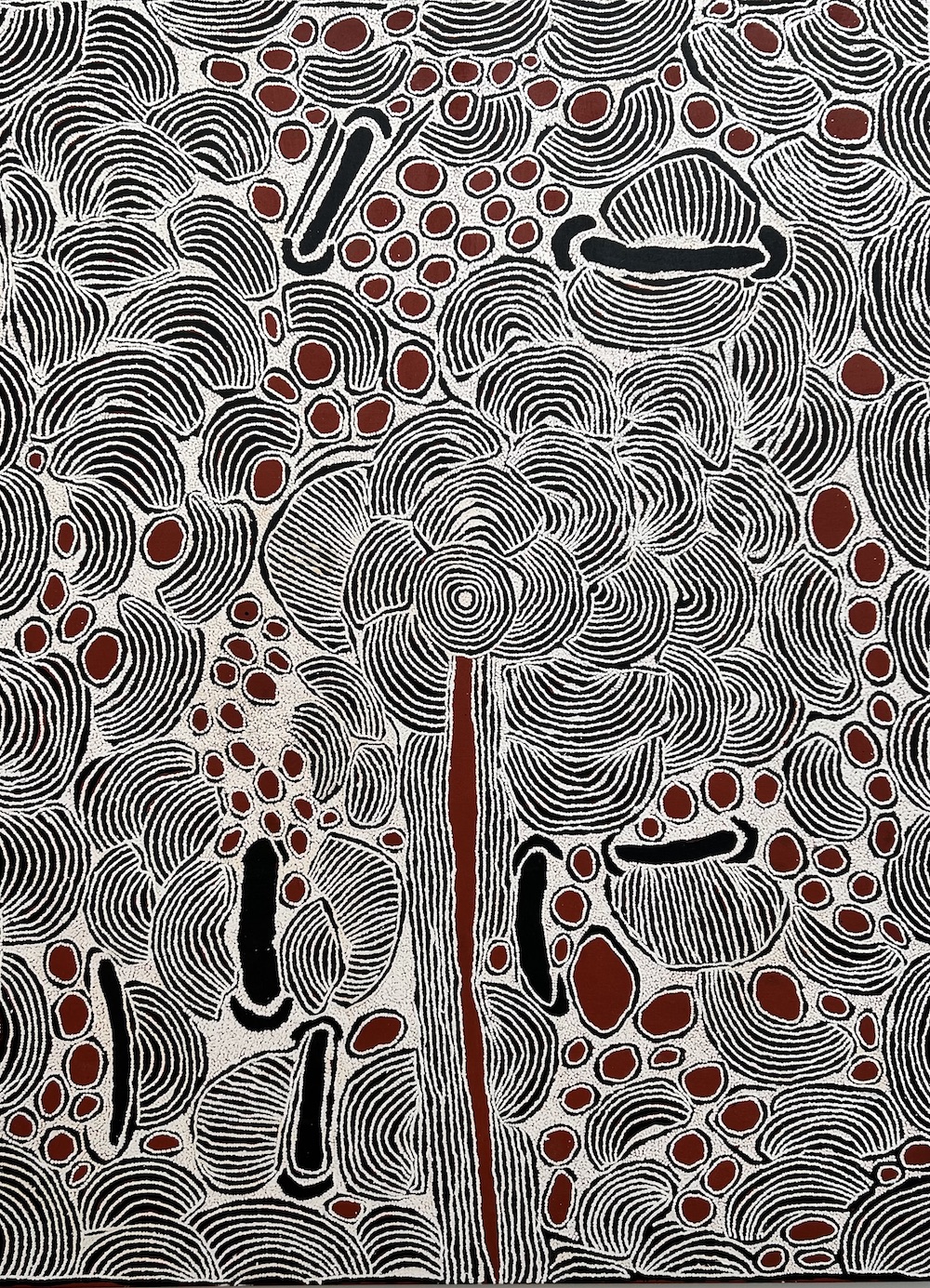Women at Wirrlunga
Ningura Napurrurla

Details
- Artist
- Ningura Napurrurla
- Title
- Women at Wirrlunga
- Year
- 2006
- Medium
- synthetic polymer on linen
- Size
- 244 x 183 cm
- Stock Number
- 223036
Provenance
Papunya Tula Artists Pty Ltd, N.T. NN0602031
African, Oceanic and American Indian Art, Sothebys, Paris, 23 June 2006, lot 68
private collection
Exhibited
Wonderful World: Celebrating the University of South Australia's new Anne & Gordon Samstag Museum of Art, 12 October - 7 December 2007, illus. p. 21
Further Information
Ningura Napurrula is a senior Pintupi woman and her country lies around 700 kms west of Alice Springs in the Gibson Desert. Ningura moved to the settlement of Kintore in the Pintupi homelands in the 1980s, after a period at Papunya where her husband Yala Yala Gibbs Tjungurrayi was one of the founders of Papunya Tula Artists. Along with a group of other Pintupi women, Ningura started to create paintings in the mid 1990s and quickly become well known on the international art stage. In 2004, Ningura was chosen as one of eight indigenous artists to have their work incorporated into the architecture of the Musee du Quai Branly in Paris. Ningura is also represented in significant collections including the National Gallery of Australia; Art Gallery of New South Wales and the Art Gallery of the Northern Territory.
This painting depicts the activities of ancestral women at the rock hole site of Wirrlunga, an important rockhole site east of Kiwirrkura. The women are represented by the many arc shapes. Wirrlunga is a site associated with birth, and the lines below the central roundel symbolise the extended shape of the Napaltjarri women who gave birth at this site. While at Wirrlunga, the women made nyimparra (hair string skirts) which are worn during ceremonies. The comb-like shapes represent these skirts. After leaving this site, the women travelled on towards Wilkinkarra (Lake Mackay). On the way they collected large quantities of a bush raisin known as kampurarrapa, depicted as the small circular motifs.
